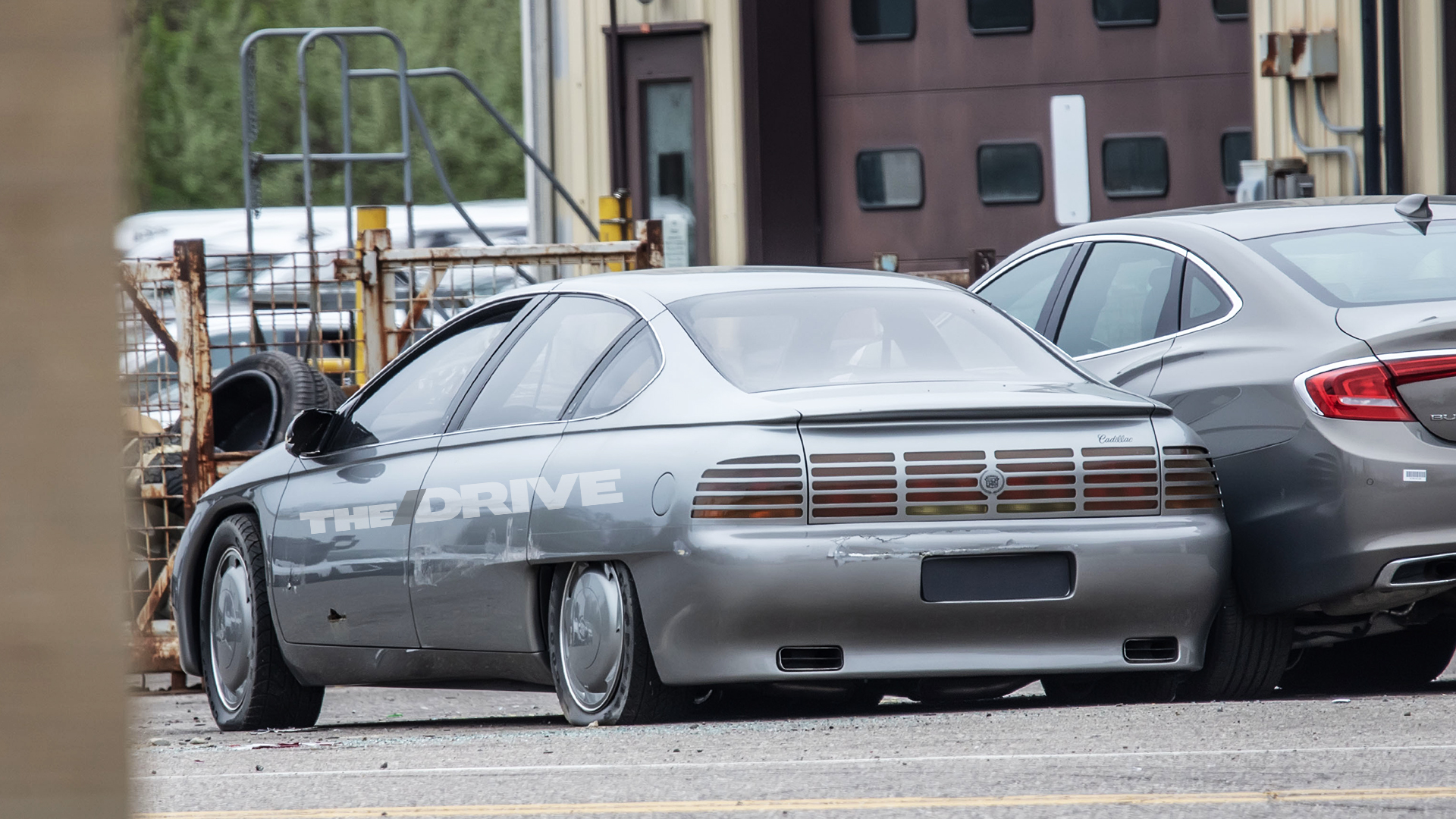

At the 1990 Chicago Auto Show, visitors were greeted by the future of American luxury cars: The Cadillac Aurora concept. This rounded sedan would prove a surprisingly accurate stab at the cars of tomorrow, exhibiting many features that’d be found on Cadillacs to come. But it’s been 34 years since then, and General Motors has no more use for the landmark sedan—which it has sent off to its almost certain destruction.
The Eldorado-sized Aurora was a groundbreaking concept that exemplified both a future we wouldn’t see and one we would. It probed a softer design language that wouldn’t be explored on Cadillac production cars, and if anything more resembles subsequent Chryslers. Outside of that, GM’s forecast was pretty good, because the Aurora touted many features that have since become commonplace even in economy cars.

The Aurora was unusual for a concept car in that it was effectively a functional prototype according to press releases archived on Dean’s Garage. It was built from the front-wheel-drive platform used by the Allante, but had its 4.5-liter fuel-injected “High Technology” V8 turned longitudinally. That let it dump its 200 horsepower and 270 pound-feet of torque (Cadillac suggested the potential for more) through either a four-speed automatic transmission or a six-speed ZF manual, which a center differential split between all four wheels. Though the differentials were all open, the Aurora featured rudimentary traction control that used both the anti-lock brake and cylinder deactivation systems to limit wheelspin.
It wasn’t the only trick the Aurora had up its sleeve, either. GM gave it something called “Computer Command Ride,” which is an over-the-top name for a form of adaptive damping that adjusted firmness with speed. It would’ve complemented the comfort of extra-wide seats and two-zone front-row climate control, which were paired with other features that’d actually make it to production cars.



Like many cars of today, the Aurora had both steering wheel and voice controls for an onboard cellular car phone, and a gauge cluster-mounted navigation display that’s a cousin of GM’s modern HUD-based systems. Because it was 1990 though, it operated using the revolutionary new tech of CDs. Guess Mort Crim was right when he said “the compact disc most certainly will become part of our everyday lives in the future.”
While it may have exhibited features that became commonplace on other luxury cars, the Cadillac Aurora itself wouldn’t be the one to bring them about. Its high point was appearing in 1993’s “Demolition Man,” after which it bequeathed its name to an ill-fated Oldsmobile that used a rebranded version of Cadillac’s disastrous Northstar V8. The Cadillac Aurora itself was probably retired to a warehouse, one which evidently just underwent spring cleaning—because the once prophetic Aurora has been spotted on its way to its final resting place.
The photographer told The Drive that he sighted the Cadillac Aurora in a yard that typically stores cars on their way to the crusher. The Aurora is clearly not being cared for in any way that suggests preservation; its bodywork is damaged on the driver’s side, and it’s stored carelessly close to another car.



“We didn’t see the crushed version of the Aurora just yet, but it’s hard to imagine another fate given the circumstances of this sighting,” the spy photographer told The Drive. “The rather beat-up example of the Aurora pictured here wouldn’t be the first Hollywood prospect to fall on hard times and find itself on the scrap heap, but it’s always sad to see.”
So it goes with many concept cars, which rarely escape into the public’s grasp. There’s too much liability associated with allowing something like this out into the world; it’s the same reason pre-production cars are typically scrapped. Historically significant or not, nothing lasts forever.
Got a tip or question for the author? You can reach them here: james@thedrive.com